One hundred years ago three Japanese optical firms came together to form Nippon Kōgaku. So started one of the world’s best-loved and most prestigious camera brands, which produced the iconic Nikon cameras listed below.
The new company soon won a reputation for its lenses and optical instruments. Then, with the outbreak of the Second World War in 1939, it became the principal supplier of optical equipment to the Japanese army. When the war ended, with the help of the occupying Allied forces, production of civilian equipment was resumed.
The Nikon Model I, launched in 1948, was a 35mm rangefinder camera. Externally, it showed a strong resemblance to the Contax II made in Germany in 1936. At 24x32mm, the film format was smaller than the conventional 24x36mm size, designed for more economy on 35mm film and to better match the 10x8in ratio used for photographic prints. The camera was supplied with a 50mm f/3.5 or f/2 Nikkor lens, a coupled rangefinder was built in and the focal plane shutter was speeded 1-1/500sec. Fewer than 800 were made before it evolved into the slightly better specified Nikon M.
The outbreak of the Korean War in 1950 brought photojournalists to the East, where they discovered the quality of Nikkor lenses when attached to their German Contax cameras. Nikon rangefinder models continued to evolve and in 1959 Nikon launched its first 35mm camera, the Nikon F – and the rest, as they say, is history.
We’ve rounded up a list of what we think are the most influential and important Nikon models ever.
Iconic Nikon cameras – 1959: Nikon F

An advertisement from the 1960s summed up the philosophy that was born with the Nikon F: the Nikon owner has the most up-to-date camera in the world, even if he bought it years ago. That’s simply because everything that Nikon brings out can be added to the original body.
The Nikon F was equipped with a bayonet mount which, at a time when most interchangeable-lens cameras were based on screw-mount systems, was faster to use and facilitated more accurate mating between lens and body.
The camera’s focal plane shutter curtains were made of titanium foil, a specification inherited from previous rangefinder cameras. The flash sync speed was 1/60sec.
From the very start, the Nikon F was designed as a system camera which offered an ever-expanding range of Nikkor lenses, interchangeable viewfinders and focusing screens, and it was the first 35mm SLR to accept a battery-driven motor drive.
In 1962, a version was launched with a Photomic head in place of the standard prism finder, linking its own shutter speed dial to the camera’s dial below. The metering head incorporated a CdS cell, and a coupling on the front conveyed the set aperture to the metering system. Juggling the shutter speed and the aperture settings while watching a needle in the viewfinder gave the correct exposure. The Photomic T, TN and FTN heads that followed later on took their readings from the focusing screen.
Nikon’s first SLR continued to evolve until the launch of the Nikon F2 in 1971. But it’s the original camera, usually with one of its Photomic heads, that has become the iconic image that sums up the legend that is the Nikon F.
Iconic Nikon cameras – 1965: Nikkormat FT
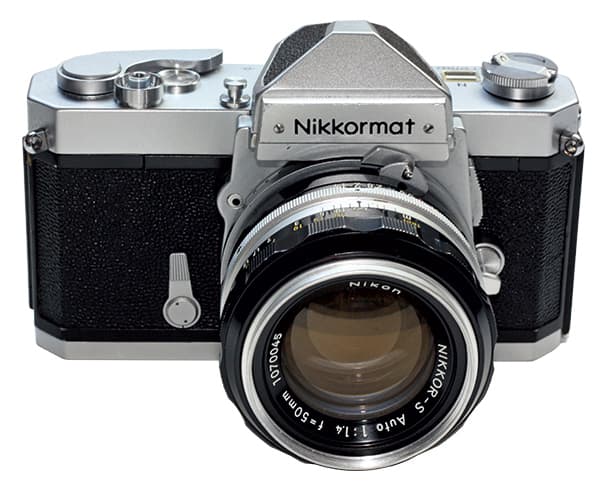
By the mid-1960s the Nikon F had established itself as the camera of choice for professionals, while also attracting amateurs who wanted Nikon quality at a more affordable price. For that, they were happy to sacrifice some of the F’s more advanced features.
The result was a new range of Nikkormat cameras that started with the FT. Out went the motor drive coupling, interchangeable viewfinders and focusing screens; in came a more stripped-down camera with through-the-lens metering. Most importantly, it accepted the Nikon F’s range of Nikkor lenses.
Variations on the Nikkormat theme continued until 1977. They were favoured, not just by amateurs, but also by pros who wanted less expensive spare bodies for their Nikkor lenses.
Iconic Nikon cameras – 1980: Nikon F3

By 1971, the Nikon F was beginning to look a little past its sell-by date. The F2 launched that year introduced cosmetic modifications and mechanical improvements including a faster top shutter speed of 1/2,000 second. But it was the F3 in 1980 that was the more major landmark.
For the first time in Nikon’s flagship range of cameras the F3 incorporated an electronic shutter. Using this, it offered aperture priority with manual override.
Interchangeable viewfinders and focusing screens were standard, and through-the-lens metering was built in, doing away with the need for separate Photomic Heads. An LCD display in the mirror box reflected exposure information into the viewfinder.
In 1983 Nikon demonstrated the F3 AF, with autofocus functions. It was not a commercial success.
Iconic Nikon cameras – 1983: Nikon FE2
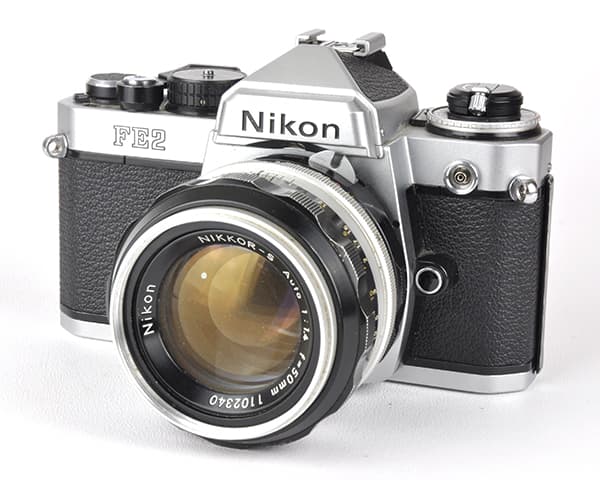
In 1972 the Olympus OM-1 set a new, more compact style for 35mm SLRs, and the other major manufacturers soon followed suit. Nikon joined the game with the all-mechanical FM in 1977. It was followed a year later by an electronic version, the FE, which upgraded its top shutter speed to 1/4,000sec with the FE2 in 1983.
The FE2 had a fixed pentaprism viewfinder, but the focusing screen could be changed via the lens mount. The FE2 also featured a hotshoe, for the attachment of an appropriate flashgun.
With an electronic shutter speeded down to a full eight seconds, the FE2 provided aperture priority exposure with speeds indicated in the viewfinder, manual override and a mechanical back-up speed of 1/250sec.
The FE2 also featured a hotshoe, so that the attachment of an appropriate flashgun automatically set the flash sync speed at 1/125sec and alerted a flash-ready light in the viewfinder.
Iconic Nikon cameras – 1983: Nikon FA
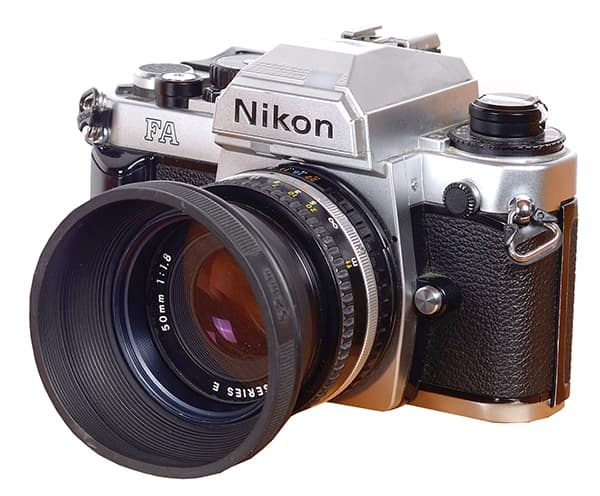
The FA’s claim to fame was the introduction, by Nikon, of Automatic Multi-Pattern (AMP) metering. This worked by dividing the scene to be metered into five segments: four arranged two by two in a square and the fifth in the centre.
As the exposure was made, computerised technology metered each segment individually and compared it with the others. In this way it could identify aspects of a subject that might lead to incorrect exposure – preference being unduly given, for example, to particularly bright or dark areas.
Nikon claimed that around 100,000 photographs had been examined and assessed while the software that ran the system was being written.
Compared to the more traditional centre-weighted metering, AMP metering was reckoned to give accurate exposure close to 95% of the time. Today, similar systems are used in most cameras, but in 1983 it was a revelation.
Iconic Nikon cameras – 1988: Nikon F4

With the F4, Nikon finally joined the multi exposure-mode in-body autofocus, built-in motor drive era of SLRs. Unlike some of its competitors, however, it did that without the need to buy a whole batch of new lenses.
Granted, older lenses would not focus automatically. For that, you needed the new range of AF Nikkors. But for manual photography, the old and new systems were still compatible. Exposure modes included shutter and aperture priority, programmed and manual. The electromagnetically controlled shutter offered speeds from 1/8,000 second to four seconds.
The F4 was replaced by the F5 in 1996 and the F6 in 2004. They were great cameras, but neither felt like a major landmark as some of their predecessors had. But there were landmarks yet to come, because by then, the digital revolution was under way.
Iconic Nikon cameras – 1999: Nikon D1
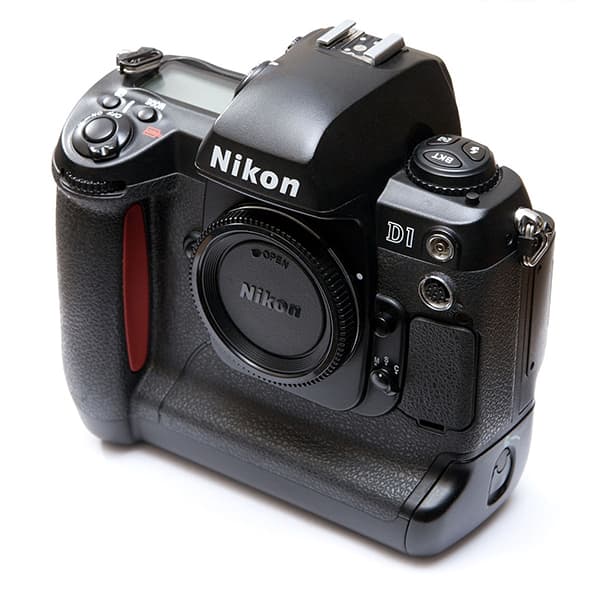
Moving into the digital era, the D1 began development back in 1996, when Nikon was working with the Eastman Kodak Company, then the market leader in fledgling digital SLRs. The Nikon D1 was introduced on 15 June 1999 and had the honour of being not only Nikon’s first DSLR, but also the first ever DSLR from a major camera manufacturer that was designed to be digital from the ground up.
The high resolution (for the time) sensor featured 2.7-megapixels, along with 4.5-frames-per-second continuous shooting, as well as full compatibility with Nikon F-mount lenses. Indeed, the D1’s body looked and felt a lot like that of the F5 film SLR camera, so newcomers to digital could hit the ground running. This was the first pro-spec Nikon DSLR to convince many sceptics amongst its customer base that digital really was here to stay.
Iconic Nikon cameras – 2007: Nikon D3
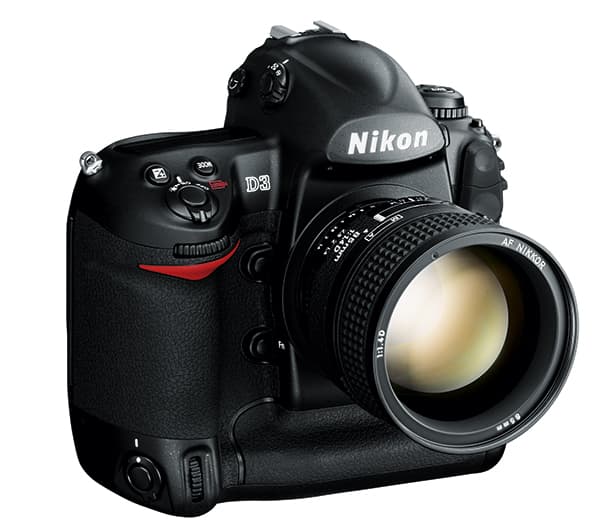
Fast forward to 2007 and along came Nikon’s first full-frame digital SLR, featuring a 36×23.9mm CMOS sensor with 12 effective megapixels. It was dubbed ‘FX’ in order to differentiate it from DX models equipped with an APS-C sensor.
The D3 was the first pro-spec Nikon DSLR to feature live view, while other ground-breaking features included the Expeed image processor and an ISO range from 200 up to 6400. In addition the Multi-Cam 3500 AF module featured the most autofocus points ever developed for an SLR – this was very much a camera aimed at sports and news photographers.
Iconic Nikon cameras – 2008: Nikon D90
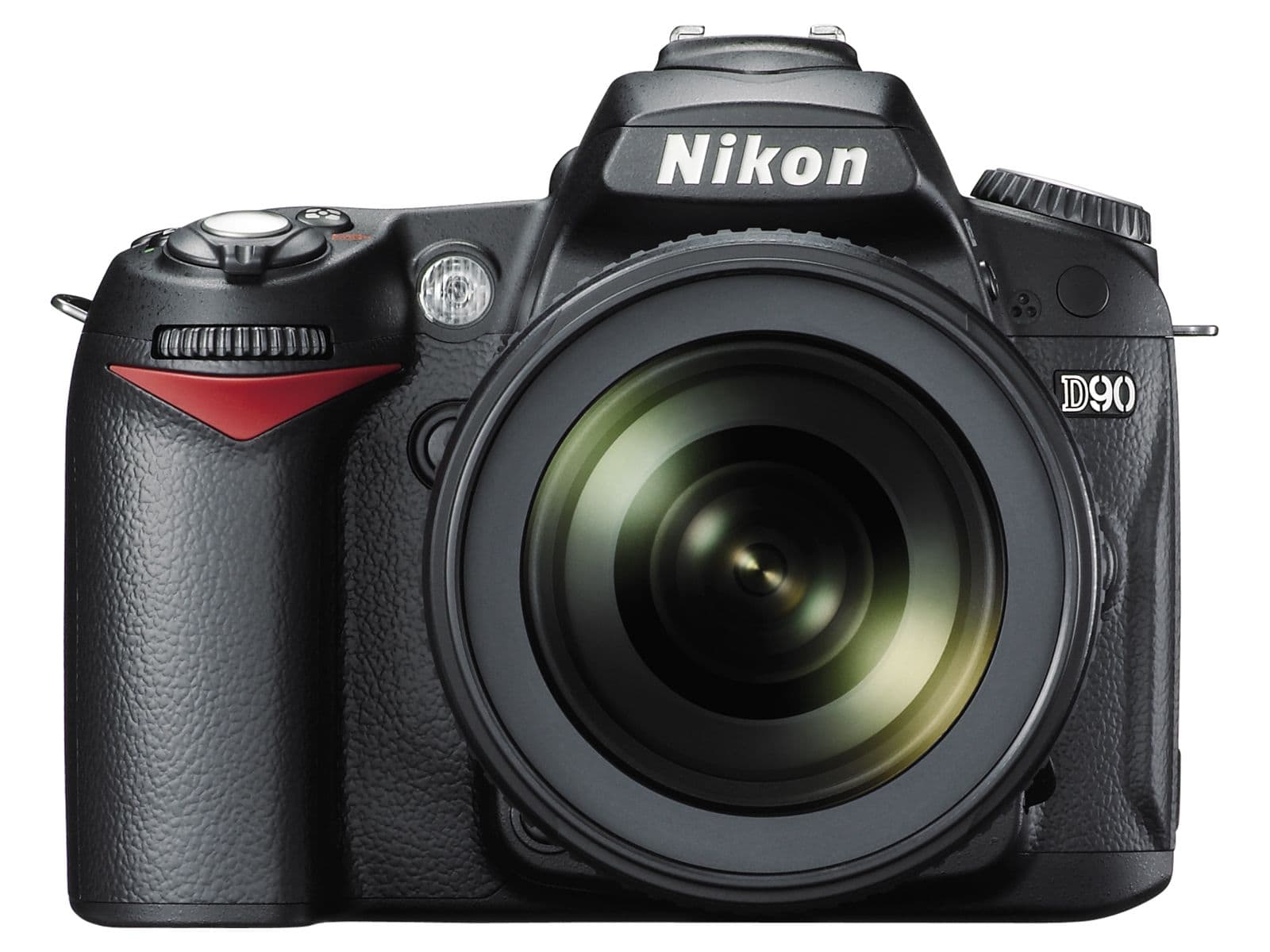
At its launch in August 2008, the Nikon D90 was based on a 12.3MP, APS-C sensor. What caused a bigger stir was the fact that this was the first DSLR to feature video-recording technology. More important for many stills enthusiasts, however, was the fact that it also had much of the same technology as the very successful full-frame D3 and APS-C-format D300 at a more affordable price (the D90 had the same sensor and Expeed image processor as the D300).
The sensor and processor enabled a sensitivity range of ISO 200-3200 (expandable to ISO 100-6400), and the camera also offered a maximum continuous shooting rate of 4.5fps that continued for around 100 of the highest-quality JPEG images or 10 raw files. A great all-rounder for those users who didn’t yet need full frame.
Iconic Nikon cameras – 2012: Nikon D800

This 36MP, full-frame warhorse stunned the industry when it was released, and elicited quite a lot of ‘wows’ from our testing team at the time. ‘The D800 is unrivalled in the level of detail it can resolve and is an enticing prospect, particularly for landscape photographers…. We talk about the bar being raised occasionally, and Nikon has certainly raised the bar in the full-frame market with the launch of the D800.’
While there were some concerns raised about noise levels over ISO 3200 and the unwieldiness of the huge raw files, the D800 became a big hit among studio, portrait and wedding photographers – the relatively sluggish burst mode made it less attractive to press and sports shooters.
However, two years later, Nikon did manage to refine its hi-res FX DSLR formula in the form of the Nikon D810, which represented an improvement in practically every conceivable area. The introduction of a new 36.3MP sensor with higher ISO sensitivity and a rated 1-stop improvement in noise handling, a new processor and better battery performance made the D810 one of the most awarded and popular DSLR cameras ever produced by any camera brand.
Iconic Nikon cameras – 2014: Nikon D750

Billed as the perfect all-rounder, the D750 is a good balance of full-frame resolution, extended ISO performance and compact handling; as such, it has proved popular with wedding and travel photographers who don’t need the bulky build and large raw files associated with the D810.
The D750 has the same 24.3-million-pixel resolution of the rather troubled D610 but also inherits many power features from the D810, such as highlight protection metering and flat video recording. The D750 also has a few tricks of its own, including a tiltable LCD screen, built-in Wi-Fi and a newly developed autofocusing module.
Iconic Nikon cameras – 2016: Nikon D5
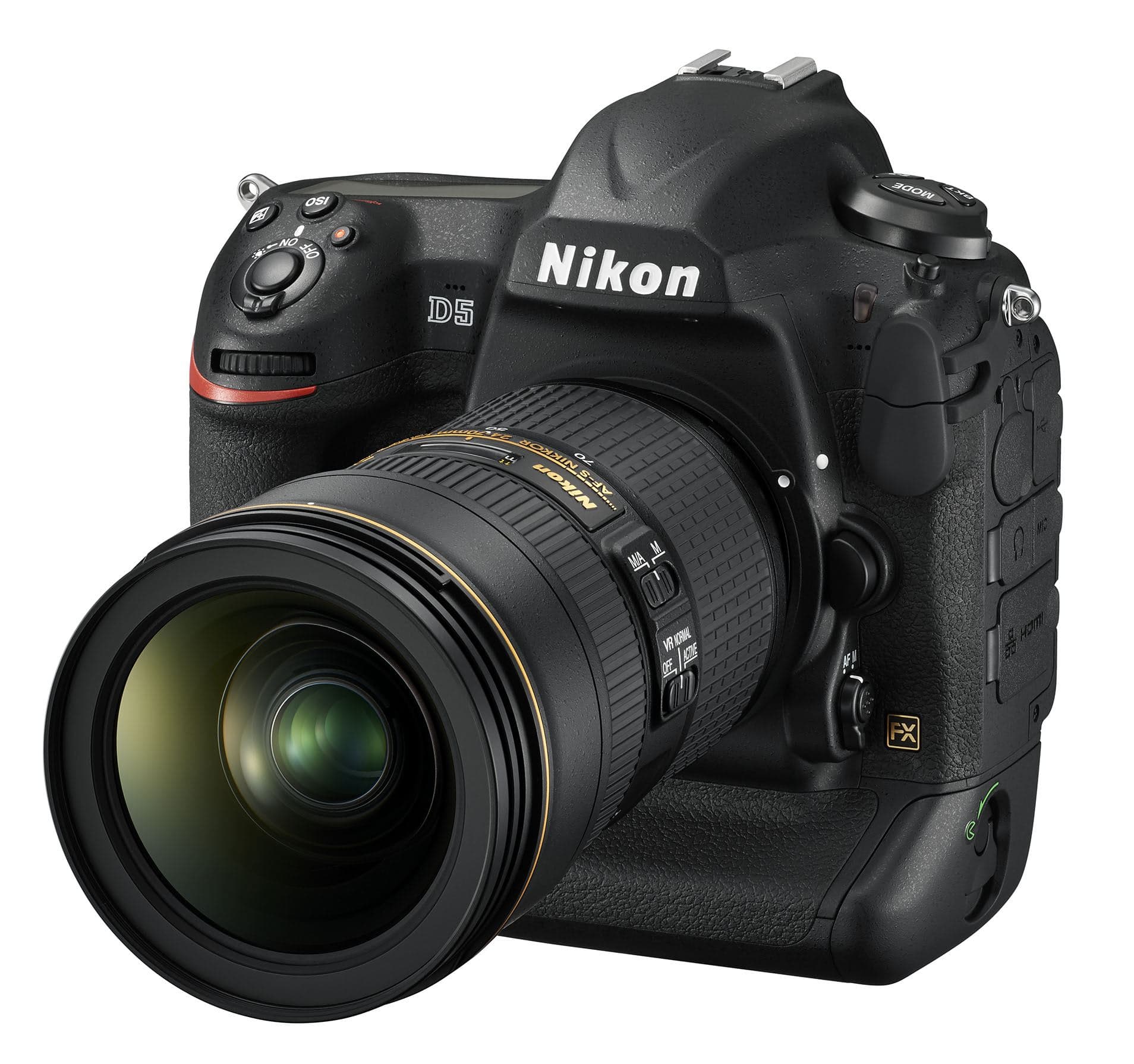
While landscape and studio photographers care about resolution, professional action shooters are much more concerned with speed, autofocus, and high ISO capability. The Nikon D5 excels in all these areas. Based around a 20.8MP sensor designed to minimise noise, it delivers an impressive standard sensitivity range of ISO 100-102,400 that can be extended to a jaw-dropping ISO 3,276,800.
While images taken at the highest extended sensitivity are practically unusable, this is a real ‘see in the dark’ camera that turned heads. Other highlights include 4K (3840 x 2160) 30p video capture with uncompressed video output via HDMI, a new 153-point autofocus system and 12fps burst mode with full AF. The D5 is very popular with sports and press shooters.







